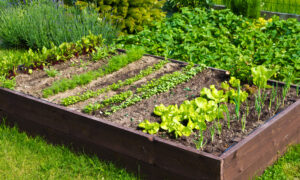During the intricate dance of maintaining a healthy diet while keeping a watchful eye on the budget, smart shopping emerges as the linchpin. It’s a skill that goes far beyond mere cost-cutting or chasing discounts; it’s about making informed decisions that affect the quality of our meals and, ultimately, our overall well-being. This blog post will dig into the pivotal role of smart shopping in the realm of budget-friendly cooking, highlighting how strategic ingredient selection can make a profound impact on both our financial outlay and nutritional intake.
At the heart of smart shopping is the concept of value – not just in monetary terms but in nutritional value as well. Every dollar spent at the grocery store carries with it the potential to contribute to our health. Making wise choices in what to put in our shopping cart means we’re investing in nutrient-dense foods that offer more bang for our buck, both financially and health-wise.
The impact of these choices is two-fold. Financially, it enables us to stretch our budget further, allowing us to enjoy more wholesome, satisfying meals without overspending. Nutritiously, it ensures our bodies receive the necessary vitamins, minerals, and other vital nutrients that are essential for your ongoing good health. This balance is especially crucial in times when food costs fluctuate and budgets become tighter.
In the following sections, we’ll explore the strategies and knowledge needed to become a savvy shopper. From understanding nutrition labels to mastering the art of shopping sales, from effective coupon use to choosing the right shopping locations – each aspect plays a crucial role in enhancing our culinary experience while keeping our expenses in check.
Join us as we unravel the secrets of smart shopping, transforming the way you think about your grocery list, and elevating your approach to buying nutritious ingredients on a budget.
In This Article
Section 1: The Art of Selecting Nutritious Ingredients
1.1 Understanding Nutrition Labels
Navigating the world of nutrition labels is akin to decoding a secret language – one that, when understood, can significantly enhance your ability to make informed and healthy food choices. This section provides a detailed guide on reading and interpreting these labels, with a focus on key nutritional factors such as fiber, protein, sugar, sodium, and fat content.
1. Serving Size and Servings Per Container
- Begin the process with the serving size and the number of servings per container. These figures are crucial as they set the context for the rest of the information on the label.
- Remember, all the nutritional values listed are typically per serving, not per package.
2. Calories
- The calorie count gives you an idea of how much energy you get from a serving of the food.
- Despite calories being a measure of energy, all of the calories are not created equally in regards to nutritional value, which is referred to as calorie density.
3. Understanding Macros: Proteins, Fats, and Carbohydrates
- Proteins: Look for the amount of protein vital for building and repairing tissues. High-protein foods are especially important in a balanced diet.
- Fats: Pay attention to the type of fat rather than just the amount. Search for foods low in saturated and trans fats but possibly higher in healthy fats like monounsaturated and polyunsaturated.
- Carbohydrates: Evaluate the type of carbs – complex carbs (like whole grains) are more nutritious and beneficial than simple sugars.
4. Fiber: The Unsung Hero
- Dietary fiber is a key component to look for. High-fiber foods can aid in digestion and keep you feeling full longer, which is helpful for weight management.
- The recommended daily intake of fiber averages (approximately 25 grams as a woman and 38 grams as a man).
5. Sugar: The Sneaky Additive
- Keep an eye on the sugar content, particularly added sugars. These are sugars that aren’t naturally occurring in the product and have been added during processing.
- The American Heart Association suggests limiting added sugars to no more than 36 grams per day for men and 25 grams for women.
6. Sodium: A Delicate Balance
- Sodium is an essential mineral, but in moderation. The high intake of sodium is linked to hypertension and heart disease.
- The American Heart Association recommends you consume no more than 2,300 milligrams a day, proceeding with an ideal limit not to exceed no more than 1,500 mg per day for most adult individuals.
7. Nutrients to Get More Of
- Lastly, focus on nutrients that you might want more of, like certain vitamins and minerals (Vitamin D, Calcium, Iron, and Potassium).
- These nutrients can play an essential role in your overall health, contributing to bone strength, carrying oxygen in the blood, and maintaining proper nerve and muscle function.
Understanding nutrition labels is more than just reading numbers; it’s about making conscious decisions regarding your health and nutrition. This knowledge empowers you to choose foods that are in line with your dietary needs and budget constraints, making it a fundamental aspect of smart shopping for nutritious ingredients.
1.2 Quality vs. Price
In the quest for budget-friendly nutrition, the balance between quality and cost is a tightrope walk. While it’s tempting to lean towards lower prices, a specialized store may only provide the ease of ‘one-stop-shopping’ for some of your grocery requirements. This section provides insights into how you can strike a harmonious balance, ensuring you get the most nutritional value for your money.
1. Understanding Quality in Food
- Quality in food can refer to various factors, including freshness, nutritional density, source (organic, local, etc.), and absence of harmful additives.
- For instance, organic produce might be pricier but can offer benefits such as lower pesticide levels and potentially higher nutrient content.
2. The Cost-Effectiveness of Whole Foods
- Whole foods, including fresh fruits, veggies, whole grains, and lean proteins, often offer better nutritional value compared to processed foods.
- While some whole foods may seem more expensive up front, their nutrient density and satiety levels can make them more cost-effective in the long run. For example, a bag of quinoa might be more expensive than a packet of instant noodles, but it provides more servings, is more filling, and offers superior nutritional benefits.
3. Seasonal and Local Purchases
- Seasonal produce tends to be less expensive. It is also more nutrient-rich than out-of-season counterparts shipped from far away.
- Begin shopping at a local farmers’ market or try joining a community-supported agriculture (CSA) program that can also offer fresher, more affordable options while supporting local economies.
4. The Bulk-Buying Advantage
- Purchasing staple items like rice, beans, lentils, and certain whole grains in bulk can lead to significant savings without compromising on quality.
- However, be mindful of storage and shelf life to avoid wastage.
5. Identifying Nutrient-Rich Bargains
- Some affordable foods are surprisingly nutrient-rich. For example, canned sardines and salmon can be inexpensive yet are excellent sources of omega-3 fatty acids and protein.
- Frozen fruits and veggies can be a budget-friendly alternative to fresh produce, often retaining most of the nutrients due to flash-freezing soon after harvest.
6. Balancing Premium Items with Economical Choices
- If you choose to invest in higher-priced items like organic dairy or meat, balance your budget by saving on other items. Incorporate more plant-based proteins, such as beans and lentils, which are cheaper than animal proteins.
- Plan meals that stretch expensive ingredients. For example, using a smaller amount of premium cheese in a dish complemented by more affordable ingredients.
7. Smart Use of Processed Foods
- Not all processed foods are detrimental. Some, like canned beans or diced tomatoes, can be convenient and healthy options, especially if they don’t contain added sugars or excessive sodium.
- Read labels to ensure these products are as close to their natural form as possible and free from unwanted additives.
In conclusion, balancing quality and price requires a strategic approach, where knowledge about what constitutes ‘quality’ in food and understanding the ‘true cost’ of food in terms of nutritional value play key roles. By applying these tips, you can make choices that benefit both your health and your wallet, ensuring that each dollar spent contributes positively to your dietary goals.
1.3 The Role of Freshness in Nutrition
Freshness in food is not just about taste; it’s a critical component in the nutritional value of what we eat. Understanding how the state of food — fresh, frozen, or canned — impacts its nutritional content is key to making smart choices. This section explores these differences and offers strategies for selecting the freshest, most nutritious options within budget constraints.
1. Fresh Produce: Nutritional Peak and Practicality
- Fresh fruits and vegetables, ideally consumed soon after harvest, often offer the highest levels of vitamins and minerals.
- However, the nutritional value of fresh produce can degrade over time. The time from farm to table matters – prolonged transport and storage can lead to a decrease in certain nutrients, like vitamin C and some B vitamins.
- Tips for Selecting Fresh Produce:
- Look for vibrant, unbruised fruits and vegetables.
- Check for firmness and avoid produce that feels overly soft or shows signs of spoilage.
- Purchase from local sources or farmers’ markets when possible, as shorter transport times often mean fresher, more nutrient-rich produce.
2. Frozen Options: Preserving Nutrients
- Freezing can actually preserve the nutritional value of produce, sometimes even better than fresh, especially if the fresh produce has been stored for a long time.
- Frozen veggies and fruits are typically harvested at their nutritional peak and frozen quickly, preserving their vitamins and minerals.
- When buying frozen, avoid products with added sugars or sodium. Opt for plain frozen fruits and vegetables, as they are closest to their natural state.
3. Canned Goods: A Viable Alternative
- Canning can preserve food for longer periods, and certain nutrients (like fiber and minerals) remain relatively stable in canned products.
- However, some vitamins, especially water-soluble ones like vitamin C and some B vitamins, can be lost during the canning process.
- Canned fruits and vegetables can be a budget-friendly and convenient option, but it’s important to:
- Choose items with no added sugars or syrups.
- Opt for low-sodium versions of vegetables and beans.
- Rinse canned goods under water to remove excess sodium or syrup.
4. The Impact of Cooking on Freshness and Nutrition
- The way we cook our produce can also affect its nutritional value. For example, boiling veggies can lead to the loss of water-soluble vitamins in the cooking water.
- Steaming or microwaving vegetables can help retain more nutrients compared to boiling or long cooking times.
5. Balancing Variety and Freshness
- A balanced approach often includes a mix of fresh, frozen, and canned options, allowing for variety and convenience while maintaining nutritional integrity.
- This variety ensures a consistent intake of nutrients throughout the year, regardless of seasonality and availability.
In summary, the freshness and form of your food choices play significant roles in their nutritional value. By understanding the benefits and limitations of fresh, frozen, and canned options and employing strategies to select the freshest produce, you can optimize the nutritional quality of your meals. This essential knowledge empowers you to make informed decisions while aligning your dietary needs and budget with the best possible food choices.
Section 2: Mastering the Art of Shopping Sales
2.1 Timing Your Purchases
Effective budget shopping isn’t just about spotting a sale; it’s about understanding and anticipating the cycles and rhythms of retail pricing. Timing your purchases by aligning with these cycles can lead to substantial savings and also ensure that you’re getting products at their peak nutritional value. Let’s delve into how to master the timing of your purchases.
1. Understanding Sales Cycles
- Most supermarkets and stores have predictable sales cycles. These cycles are often monthly or quarterly and are influenced by inventory turnover and seasonal changes.
- For example, certain items like baking goods may go on sale before the holidays, while grilling items are discounted in early summer.
- Monitoring or keeping track of these patterns can help you anticipate when to buy certain items. A simple way to start is by saving and reviewing past grocery flyers or newsletters.
2. Best Times to Buy Seasonal Items
- Produce: Fruits and vegetables are the cheapest and most nutritious when they are in season. For instance, berries are typically on sale in summer, while apples and squash are cheaper in the fall.
- Seasonal purchasing also applies to seafood and meats. For example, turkey is generally more affordable around Thanksgiving.
- Purchasing seasonal items not only saves money but also ensures you’re eating foods at their peak freshness and nutritional value.
3. Stocking Up During Sales
- When staples or non-perishables are on sale, consider buying in bulk. This strategy works well for items like pasta, rice, canned goods, and even meat, which can be frozen for later use.
- Be cautious, though: only stock up on items that you know you will use before they expire to avoid waste.
4. Utilizing Loyalty Programs and Sale Alerts
- Many stores offer a loyalty program that provides members with additional discounts or early notifications of sales.
- Signing up for newsletters or using store apps can keep you informed about upcoming deals, allowing you to plan your shopping trips accordingly.
5. The Role of Coupons in Timing Purchases
- Combining coupons with sales can maximize savings. Use coupons when the item is already on sale to get it at the lowest possible price.
- Organize your coupons based on expiration dates and sales cycles to ensure you use them at the best times.
6. Understanding the Shelf Life and Storage Options
- When purchasing items on sale, especially perishables, consider their shelf life and storage options.
- Investing in good storage solutions, like vacuum sealers for meat or airtight containers for dry goods, can extend the life of your purchases, making bulk buying more feasible.
Mastering the art of timing your purchases requires a blend of observation, planning, and a bit of strategic thinking. By aligning your shopping habits with sales cycles and seasonal availability, you can make significant strides in balancing your budget without compromising on the quality and nutritional value of your food. This approach not only makes economic sense but also encourages a more natural, seasonally-aligned way of eating.
2.2 Navigating In-Store Sales and Promotions
Taking advantage of in-store sales and promotions is a cornerstone of budget-friendly shopping, but it requires savvy strategies to ensure that these deals truly benefit your wallet and health. Here, we’ll explore how to navigate these promotions effectively, focusing on how to make the most of these opportunities without sacrificing nutrition or falling prey to impulse buys.
1. Deciphering Deals and Discounts
- Understand the types of sales promotions: These can range from straightforward discounts to more complex deals like “buy one, get one free” or “buy two, get a third at half price.”
- Evaluate if the promotion genuinely offers a good deal. Sometimes, a “sale” price may not be much lower than the regular price, or the deal may require purchasing more than you need.
2. Aligning Sales with Nutritional Needs
- Prioritize promotions on healthy, nutrient-dense foods. For example, opt for sales of fresh produce, lean proteins, whole grains, and dairy rather than processed foods high in sugar or sodium.
- Be cautious of sales on snack foods or items you wouldn’t typically buy. These seem like good deals but can lead to unnecessary calorie consumption and food waste.
3. Planning and Preparation
- Go into the store with a clear plan. Having a shopping list and a rough meal plan can help you focus on the items you need, making you less susceptible to marketing tactics.
- Compare unit prices to ensure you’re getting the best deal. Sometimes, a sale item may not be as cost-effective as a similar product in a different brand or size.
4. The Art of Avoiding Impulse Purchases
- Sales and promotions can lead to impulse buying. Stay mindful of your actual needs versus wants.
- Stick to your shopping list as closely as possible. If you see a sale item that’s tempting but not on your list, take a moment to consider whether it fits into your meal plan and budget.
5. Utilizing In-Store Rewards and Loyalty Programs
- Many stores offer loyalty programs that can lead to significant savings. These programs often provide members with special prices or additional discounts on certain items.
- Be strategic about these programs. While they can offer great deals, they can also encourage purchasing items you don’t need. Use these rewards for purchases that align with your nutritional goals and budget.
6. Seasonal and Clearance Sections
- Seasonal sections can have great deals, especially when the season is ending; this applies to both food items and cooking essentials.
- Check the clearance sections for items nearing their sell-by date that you can consume quickly or freeze for later use.
In summary, navigating in-store sales and promotions effectively is a delicate balance of strategic planning and self-control. By focusing on the nutritional value of sale items and adhering to a well-thought-out shopping plan, you can make these promotions work in favor of your health and budget. Remember, the best deal is one that benefits both your wallet and your well-being.
2.3 Utilizing Technology
During the digital age, technology plays a pivotal role in enhancing our shopping experience, especially when it comes to finding the best deals and managing budgets. This section explores how to leverage apps, websites, and digital tools to make smart, budget-friendly decisions while shopping for nutritious ingredients.
1. Price Comparison Tools and Apps
- There are various apps and websites designed to compare prices across different stores. Utilizing these tools can help you identify where to buy your groceries at the lowest price.
- Some apps also provide historical price data, helping you understand if a current “sale” price is genuinely a good deal based on past pricing trends.
- Examples of such tools include ShopSavvy, Basket Savings, and Flipp, which aggregate sales information and offer price comparisons for various retailers.
2. Digital Coupons and e-Circulars
- Many stores have moved their circulars online, offering digital coupons that can be loaded or added directly to your loyalty card or account.
- Websites and apps like Coupons.com and RetailMeNot offer a wide array of digital coupons to print or scan from your smartphone.
- Some apps also allow you to upload your grocery receipt to receive cash-back offers on certain products.
3. Online Grocery Shopping and Curbside Pickup
- Online grocery shopping platforms can save time and help avoid impulse purchases. They allow you to see the running total of your shopping cart, making it easier to stick to your budget.
- Curbside pickup and delivery options can also help resist the temptation of in-store impulse buys, though it’s important to consider any additional fees associated with these services.
4. Subscription and Delivery Services
- Consider subscription services for items you regularly purchase. These services often offer a discount on recurring orders.
- For fresh produce, look into local farm delivery services or community-supported agriculture (CSA) subscriptions, which can offer seasonal produce at competitive prices.
5. Using Technology to Track Your Spending
- Budget tracking apps can help you monitor your grocery spending over time, making it easier to identify areas where you can save.
- Tools like Mint or YNAB (You Need A Budget) can be particularly helpful in setting and sticking to a food budget.
6. Social Media and Online Communities
- Joining social media groups or online forums focused on budget-friendly eating can provide a wealth of tips and support.
- These communities often share deals, recipes, and strategies for economical and nutritious cooking.
In leveraging technology, the key is to find tools and apps that align with your shopping habits and preferences. By integrating these digital resources into your shopping routine, you can make more informed decisions, save time, and effectively manage your budget while ensuring your meals are both nutritious and cost-effective. Technology, used wisely, can be a powerful ally in your journey towards smart, budget-conscious shopping.
Section 3: Utilizing Coupons Effectively
3.1 Couponing 101
Coupons can be a powerful tool in the arsenal of budget-friendly shopping, offering opportunities to save significantly on groceries. However, their effective use requires understanding where to find them, how to organize them, and most importantly, how to use them without falling into the trap of buying unnecessary items. This section covers the essentials of couponing, setting the stage for maximizing your savings while maintaining your focus on nutritious, budget-conscious purchases.
1. Where to Find Coupons
- Local Newspapers and Circulars: Often, the Sunday edition of local newspapers is rich with manufacturer coupons. Additionally, keep an eye out for weekly store circulars that come in the mail or are available at the store entrance.
- Online Coupon Websites: Websites like Coupons.com, SmartSource, and RedPlum offer printable coupons. These particular sites are regularly updated with new coupons for a wide range of products.
- Manufacturer Websites and Newsletters: Visit the websites of your favorite brands. Then, sign up for their newsletters. Many brands offer coupons directly to subscribers.
- Digital Coupons: Most grocery stores now offer digital coupons that are loaded onto your loyalty card or account through their website or app.
- In-Store Coupon Dispensers: Keep an eye out for coupon dispensers in store aisles. These often offer deals on products placed nearby.
2. Organizing Your Coupons
- Create a Coupon Binder: Organize coupons into categories such as dairy, meats, dry goods, etc. Use clear sleeves or dividers for easy visibility and access.
- Digital Organization: If you prefer digital coupons, use apps or a specific folder in your email to keep them organized. Some grocery apps also allow you to upload and store digital coupons.
- Expiration Date Tracking: Regularly sort through your coupons to check expiration dates. Prioritize using coupons that are close to expiring.
3. Strategies for Maximizing Savings
- Plan Around Coupons: Build your meal plan and shopping list based on the coupons you currently have filed. This additional step ensures that you’re using them for items you need rather than buying unnecessary products just because you have a coupon.
- Stacking Coupons: You will discover that some stores will allow you to cash in a manufacturer’s coupon plus (+) an onsite store coupon for the same item. Familiarize yourself with store policies to make the most of this strategy.
- Avoiding Impulse Buys: Just because you have a coupon doesn’t mean you need the item. Stick to your shopping list to avoid purchasing items you don’t really need.
- Coupon Matching: Keep an eye on store sales and match them with your coupons for added savings. This matching process can often lead to getting items for free or nearly free.
4. Ethical Couponing
- Respect store policies and the terms of the coupons. Ethical couponing ensures a positive experience for both the shopper and the retailer.
Effective couponing requires a blend of organization, strategic planning, and restraint. By integrating these couponing fundamentals into your shopping routine, you can realize substantial savings while still prioritizing the purchase of nutritious and necessary items. Coupons are not just about getting a discount; they’re about smartly incorporating these savings into your overall budget-friendly and health-conscious shopping strategy.
3.2 Combining Coupons with Sales
Mastering the art of combining coupons with sales is a strategic approach that may lead to substantial savings. When executed skillfully, this tactic not only stretches your budget but can also enhance the nutritional quality of your meals. This section delves into advanced tips for pairing coupons with sales and includes real-life case studies illustrating the successful application of these strategies.
1. Timing is Everything
- Understanding Sale Cycles: Sales typically run on weekly or monthly cycles. By tracking these cycles, you can anticipate when certain items will be discounted.
- Coupon Expiry and Sale Alignment: Be vigilant of the expiration dates of your coupons and make it a point to use them when those items are likely to go on sale.
2. Strategic Coupon Use During Sales
- Stock Up During Sales: Use coupons on items when they are on sale to maximize savings. This step is particularly effective for non-perishable or freezable items.
- BOGO (Buy One, Get One) Sales: BOGO deals combined with coupons can offer exceptional savings. In some cases, you can use two coupons in a BOGO deal – one for each item, including the free one.
3. Double Coupon Days
- Leverage Double Coupon Policies: Some stores have special days where they double the value of coupons. Using your coupons on these days, especially on sale items, can lead to significant savings.
4. Combining Digital and Paper Coupons
- Understand Store Policies: While some stores don’t allow the stacking of digital and paper coupons for a single item, others do. Familiarize yourself with your store’s policy.
- Mix and Match Coupons: Use a combination of manufacturer and store coupons (both digital and paper) for the same purchase when allowed.
5. Case Studies of Successful Couponing
- Case Study 1: The Budget-Conscious Family
- A family with a tight grocery budget uses weekly circulars to plan their meals around sale items. They couple this with a collection of manufacturer coupons for additional savings. For instance, by combining a $1 off coupon with a half-price sale on whole grain pasta, they stock up for months, ensuring healthy, cost-effective meals.
- Case Study 2: The Health-Focused Shopper
- An individual focusing on a nutritious diet targets sales of fresh produce and lean meats, supplementing with coupons for these items from store newsletters and digital platforms. They utilize double coupon days for maximum savings, often halving their spending on fresh, high-quality ingredients.
6. Avoiding the Pitfalls
- Don’t Compromise Nutrition for Savings: While combining coupons with sales can be exciting, it’s important to keep the lure of a deal from dictating your diet. Stay focused on purchasing items that align with your nutritional goals.
- Be Mindful of Overbuying: Stock up wisely. Avoid purchasing excessive quantities of perishable items, no matter how tempting the savings may be.
In conclusion, combining coupons with sales requires a blend of careful planning, awareness of store policies, and a focus on your nutritional needs. By mastering these techniques, you will transform your shopping experience, reaping the benefits of a well-stocked pantry filled with nutritious food, all achieved within a budget-friendly framework. Remember, the goal is to make every dollar count towards healthy, cost-effective eating.
Section 4: Strategic Shopping Locations

4.1 Where to Shop for the Best Deals
Choosing the right shopping location can significantly impact both the cost and quality of your groceries. This section provides a comparative analysis of various shopping venues, including supermarkets, farmers’ markets, online retailers, and bulk stores. We’ll examine the pros and cons of each, helping you make informed decisions about where to shop for the best deals, quality, and nutritional value.
1. Supermarkets
- Pros:
- Wide variety of products, including specialty and international items.
- Regular sales and promotions, often with loyalty programs, for additional savings.
- Convenient one-stop shopping for all grocery needs.
- Cons:
- Prices can be higher for organic or specialty items compared to other outlets.
- The abundance of choices, including processed foods, may lead to impulse purchases.
- Nutritional Value:
- Offers a broad range of fresh, frozen, and canned options. Nutritional value varies based on the products chosen.
2. Farmers’ Markets
- Pros:
- Fresh, locally grown produce that often has a higher nutritional value due to reduced time from farm to table.
- Supports local farmers and the local economy.
- Seasonal items are usually fresher and more flavorful.
- Cons:
- Limited availability and seasonal operation.
- It can be more expensive for certain items compared to supermarkets.
- Nutritional Value:
- Typically higher in fresh produce due to the freshness and minimal processing.
3. Online Retailers
- Pros:
- Convenient shopping from home, with a wide selection available.
- Potential savings through online-only deals, bulk buying options, and price comparison.
- Subscription services for regular deliveries can offer additional discounts.
- Cons:
- You cannot physically inspect the quality of fresh produce before a purchase.
- Shipping costs may extend the total expense.
- Nutritional Value:
- Similar to supermarkets, but depends on the range of products offered by the retailer.
4. Bulk Stores (Warehouse Clubs)
- Pros:
- Bulk purchases can lead to significant savings, particularly for non-perishable items.
- Ideal for stocking up on staples like grains, beans, and canned goods.
- Often offers organic and health-focused products at competitive prices.
- Cons:
- Membership fees are required.
- Not ideal for small households due to large quantities.
- Limited selection compared to traditional supermarkets.
- Nutritional Value:
- Buying in bulk can be beneficial for stocking up on nutritious staples, but fresh produce variety may be limited.
5. Specialty Health Food Stores
- Pros:
- Wide range of organic, gluten-free, and specialty dietary products.
- Often source high-quality, ethically produced goods.
- Cons:
- Prices can be significantly higher.
- A specialized store might not provide you with the ease of ‘one-stop-shopping’ for all your grocery requirements.
- Nutritional Value:
- Typically offers a high standard of nutritional products, focusing on health and dietary-specific items.
In summary, each shopping location has its unique set of advantages and drawbacks. Supermarkets offer variety and convenience, farmers’ markets excel in fresh, local produce, online retailers provide the comfort of shopping from home, and bulk stores are great for savings on large quantities. The key is to blend shopping locations based on your specific needs, preferences, and budget. By strategically choosing where to shop, you can optimize both the cost and nutritional value of your grocery purchases.
4.2 Specialty Stores and Health Food Options
Navigating the world of health food and specialty stores can be an enlightening aspect of your budget-friendly shopping strategy. These stores often offer unique products that cater to specific dietary needs and preferences. Understanding when and why to shop at these stores and how to balance their higher costs with their nutritional benefits is key. This section explores these considerations to help you make informed decisions.
1. The Allure of Specialty Health Food Stores
- Diverse Range: These stores offer a wide variety of health-focused products, including organic produce, gluten-free items, vegan and vegetarian options, and specialty supplements.
- Quality and Ethics: Often, products in these stores are sourced from ethical and sustainable practices, providing options that are not only healthier but also environmentally responsible.
- Expertise: Staff in specialty health food stores are usually knowledgeable and can offer valuable advice on nutrition and product selection.
2. When to Consider Specialty Stores
- Specific Dietary Needs: If you or someone in your household has specific dietary restrictions (e.g., gluten intolerance, vegan diet), these stores can offer a wider selection than typical supermarkets.
- Looking for Unique or Rare Ingredients: For certain health-centric or exotic ingredients that aren’t available in regular stores, specialty stores are a go-to.
- Quality Over Quantity: If you prioritize organic or sustainably sourced food, specialty health food stores can provide these high-quality products.
3. Balancing Cost and Nutritional Benefits
- Prioritize Your Purchases: All items do not need to be purchased from a specialty store. Prioritize items that are significantly healthier or only available there.
- Compare Prices: Sometimes, the difference in cost for organic or specialty items might not be as expensive as expected. It’s worth comparing prices with regular supermarkets for similar products.
- Bulk Buying and Sales: Look out for bulk buying options or sales in these stores to save money. Joining loyalty programs can also offer discounts and deals.
4. Alternative Health Food Options
- Online Health Food Retailers: Sometimes, these can offer better prices or a wider range of desired products. Look for online retailers with good reputations for quality and service.
- Local Health Food Co-ops: These can be a more budget-friendly option, offering high-quality products at lower prices. They also foster a sense of community and shared health goals.
5. The Trade-off: Price for Quality
- While items in specialty health food stores can be pricier, they often offer a higher nutritional value, which can be a worthwhile trade-off for your health and dietary goals.
- Consider the long-term health benefits and potential savings on healthcare costs by consuming higher-quality, nutritious foods.
Specialty health food stores and options are an integral part of a comprehensive approach to budget-friendly, nutritious shopping. They serve as valuable sources for specific dietary needs, quality products, and expert advice. Balancing the higher costs of these specialty items with their nutritional and ethical benefits requires thoughtful consideration and strategic planning. By selectively incorporating these stores into your shopping routine, you can enjoy their unique offerings without derailing your budget.
4.3 Local and Community-Based Options
In the quest for fresh, nutritious, and budget-friendly food, local and community-based options offer a unique and impactful alternative. This section explores the benefits of community-supported agriculture (CSA), food co-ops, and local farmers’ markets, highlighting how they can positively influence both your nutrition and budget.
1. Community-Supported Agriculture (CSA)
- Direct Support to Farmers: CSA programs involve purchasing a share of a farmer’s crop for a season. This upfront investment helps support local farmers directly and provides you with a regular supply of fresh produce.
- Seasonal and Fresh Produce: CSAs provide a variety of the freshest seasonal produce, often picked at the peak of ripeness, which maximizes nutritional value.
- Cost-Effectiveness: While the upfront cost might seem high, the price per unit of produce is generally lower than or competitive with supermarket prices.
- Building Community Connections: Participating in a CSA fosters a connection with local farmers and the community, creating an understanding of where and how your food is grown.
2. Food Co-ops
- Member-Run Grocery Options: Food co-ops are member-owned and operated stores that focus on providing high-quality, often locally sourced products.
- Potential Savings for Members: While there is typically a membership fee, members can benefit from lower prices, and in some co-ops, they can also participate in profit-sharing or receive discounts.
- Focus on Sustainable and Organic Products: Co-ops often emphasize organic, non-GMO, and sustainably produced items, which can offer higher nutritional benefits.
3. Local Farmers’ Markets
- Access to Fresh, Local Produce: Farmers’ markets are excellent sources of fresh fruits, vegetables, dairy, and meats, often at prices comparable to or lower than supermarkets.
- Nutritional Benefits of Freshness: Produce at farmers’ markets is usually harvested at peak ripeness, ensuring maximum flavor and nutritional content.
- Reduced Environmental Impact: Buying local reduces the carbon footprint associated with transporting food long distances.
- Variety and Seasonality: Farmers’ markets offer a variety of seasonal items, encouraging a diverse diet and the opportunity to try new, fresh foods.
4. Benefits of Supporting Local Agriculture
- Freshness and Nutrition: Locally sourced food is fresher, which can translate into better taste and higher nutritional content.
- Economic Impact: Supporting local agriculture helps bolster the local economy and ensures the viability of local farms.
- Environmental Benefits: Local sourcing reduces transportation needs while reducing the carbon footprint attached to food production and its distribution.
- Community Well-Being: Strengthening local food systems can lead to more resilient communities and a better understanding of food sources and sustainability.
Local and community-based food options present an excellent opportunity to access fresh, nutritious food while supporting local economies and sustainable practices. By integrating CSAs, food co-ops, and farmers’ markets into your shopping routine, you not only benefit from high-quality produce but also contribute to the well-being of your community and environment. Balancing these options with traditional grocery shopping can lead to a well-rounded, nutritious diet that is both budget-friendly and ethically satisfying.
Smart Shopping Conclusion
As we wrap up our comprehensive guide to smart shopping for nutritious ingredients, let’s revisit the key strategies that intertwine the threads of nutrition and budget. This journey has equipped you with the tools and knowledge to navigate the complexities of grocery shopping, ensuring that each purchase contributes positively to both your health and your wallet.
Recap of Key Strategies:
- Understanding Nutrition Labels: The cornerstone of smart shopping, enabling you to make informed choices about the food you buy.
- Quality vs. Price: Balancing the need for high-quality, nutritious foods with budget constraints and knowing when to invest in premium products.
- The Role of Freshness in Nutrition: Opting for fresh, frozen, or canned options wisely, based on their nutritional value and cost-effectiveness.
- Mastering the Art of Shopping Sales: Timing your purchases, navigating in-store promotions, and leveraging technology to maximize savings without sacrificing quality.
- Utilizing Coupons Effectively: Developing a strategic approach to couponing, combining them with sales, and avoiding the pitfalls of impulse buying.
- Strategic Shopping Locations: Choosing where to shop – from supermarkets to farmers’ markets, online retailers, and bulk stores – to optimize both cost and nutritional value.
- Specialty Stores and Health Food Options: When and why to consider these outlets, and how to balance their higher costs with nutritional benefits.
- Local and Community-Based Options: The advantages of supporting local agriculture through CSAs, food co-ops, and farmers’ markets.
Looking Ahead:
The next installment in this series, “The Nutritional Building Blocks of Budget Cooking,” will dive into how to craft a nutrient-rich diet on a budget. We’ll explore essential nutrients, budget-friendly sources of these nutrients, and how to incorporate them into your daily meals.
Now that you’re armed with the strategies for smart shopping, we encourage you to apply these techniques in your next grocery outing. Experiment with different shopping locations, try out new tools for finding deals and observe how these practices impact both your budget and the quality of your meals.
We would love to hear from you over on our Facebook page! Share your experiences, successes, and even the challenges you’ve encountered while implementing these strategies. Your feedback and additional tips are invaluable as we all strive to become more savvy, health-conscious shoppers.
Join us in our next blog post to continue this journey towards a nutritious, budget-friendly culinary lifestyle. Together, let’s transform the way we shop, cook, and eat.


















